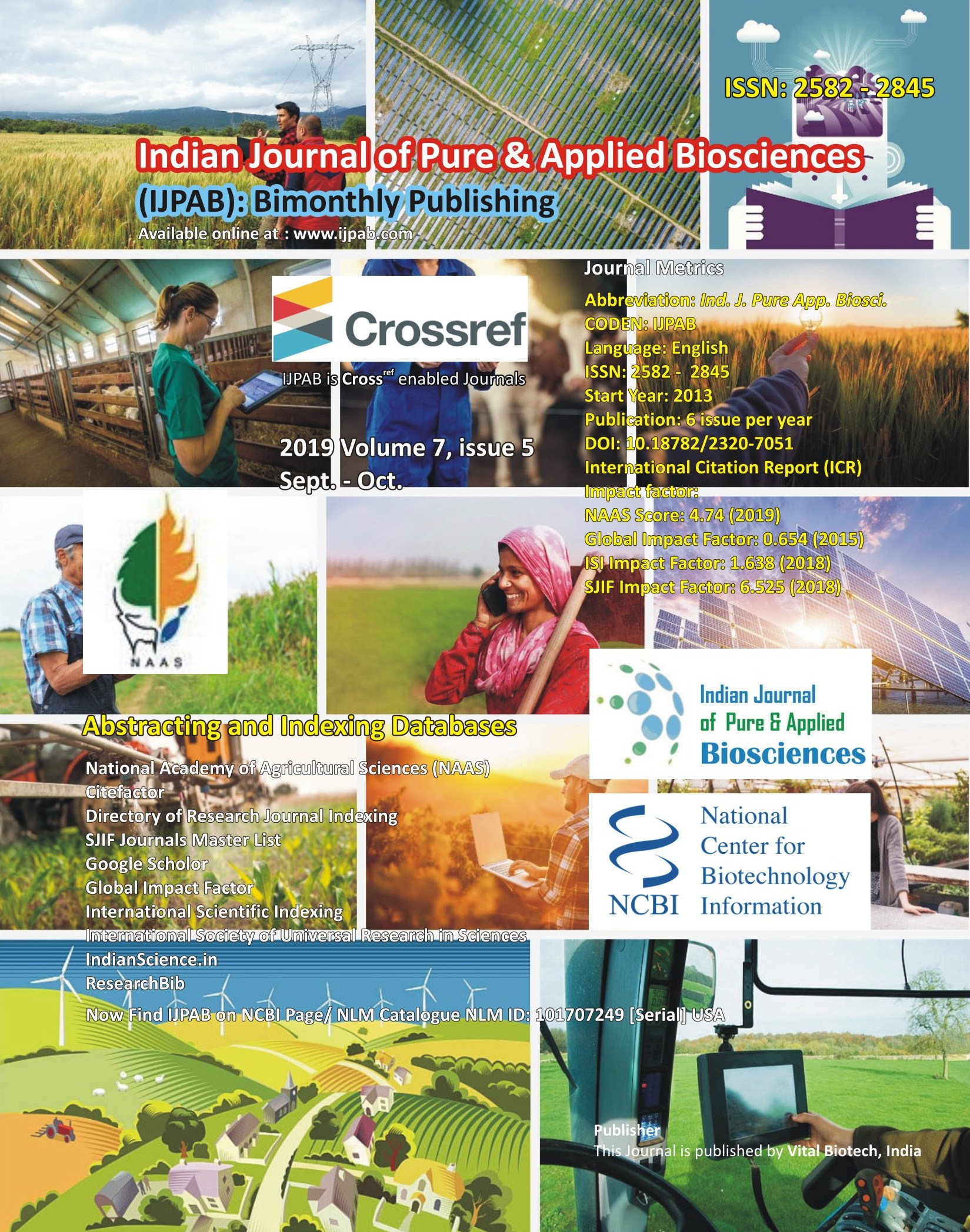
-
No. 772, Basant Vihar, Kota
Rajasthan-324009 India
-
Call Us On
+91 9784677044
-
Mail Us @
editor@ijpab.com
Indian Journal of Pure & Applied Biosciences (IJPAB)
Year : 2019, Volume : 7, Issue : 5
First page : (375) Last page : (392)
Article doi: : http://dx.doi.org/10.18782/2320-7051.7852
P Solubilisers for Sustainance of Agriculture- A Review
Parneet Kaur1 and Anshu Sibbal Chatli2*
1Department of Biotechnology, 2*Department of Microbiology
Guru Nanak Girls College, Model Town, Ludhiana, Punjab, India
*Corresponding Author E-mail: manansh@hotmail.com
Received: 11.09.2019 | Revised: 17.10.2019 | Accepted: 23.10.2019
ABSTRACT
Phosphorus is the most common nutrient which helps the plants to convert metabolites into usable building blocks for growth. The use of phosphate solubilising bacteria as inoculants simultaneously increases P uptake by the plants and hence improves crop yield. Strains from the genera Pseudomonas, Bacillus and Rhizobium are among the most powerful Phosphate solubilisers. The principal mechanism for mineral phosphate solubilisation is the production of organic acids. Acid phosphatase plays a major role in the mineralization of organic phosphorous in soil. Several phosphatase encoding genes have been cloned and characterized. A few genes involved in mineral phosphate solubilisation have been isolated. Therefore, genetic manipulation of phosphate solubilising bacteria can improve plant growth. Synergistic effect of phosphate solubilising microorganisms on TCP solubilisation was highest when triple culture of Aspergillus niger, Aspergillus flavus and Trichoderma sp. was inoculated in NBRIP broth as compared to double and single inoculations.
Keywords: Soil Samples, Biosolubilisation, Tricalcium phosphate, PVK broth, NBRIP broth, Synergictic effect
Full Text : PDF; Journal doi : http://dx.doi.org/10.18782
Cite this article: Kaur, P. & Chatli, A.S. (2019). P Solubilisers for Sustainance of Agriculture- A Review, Ind. J. Pure App. Biosci. 7(5), 375-392. doi: http://dx.doi.org/10.18782/2320-7051.7852

